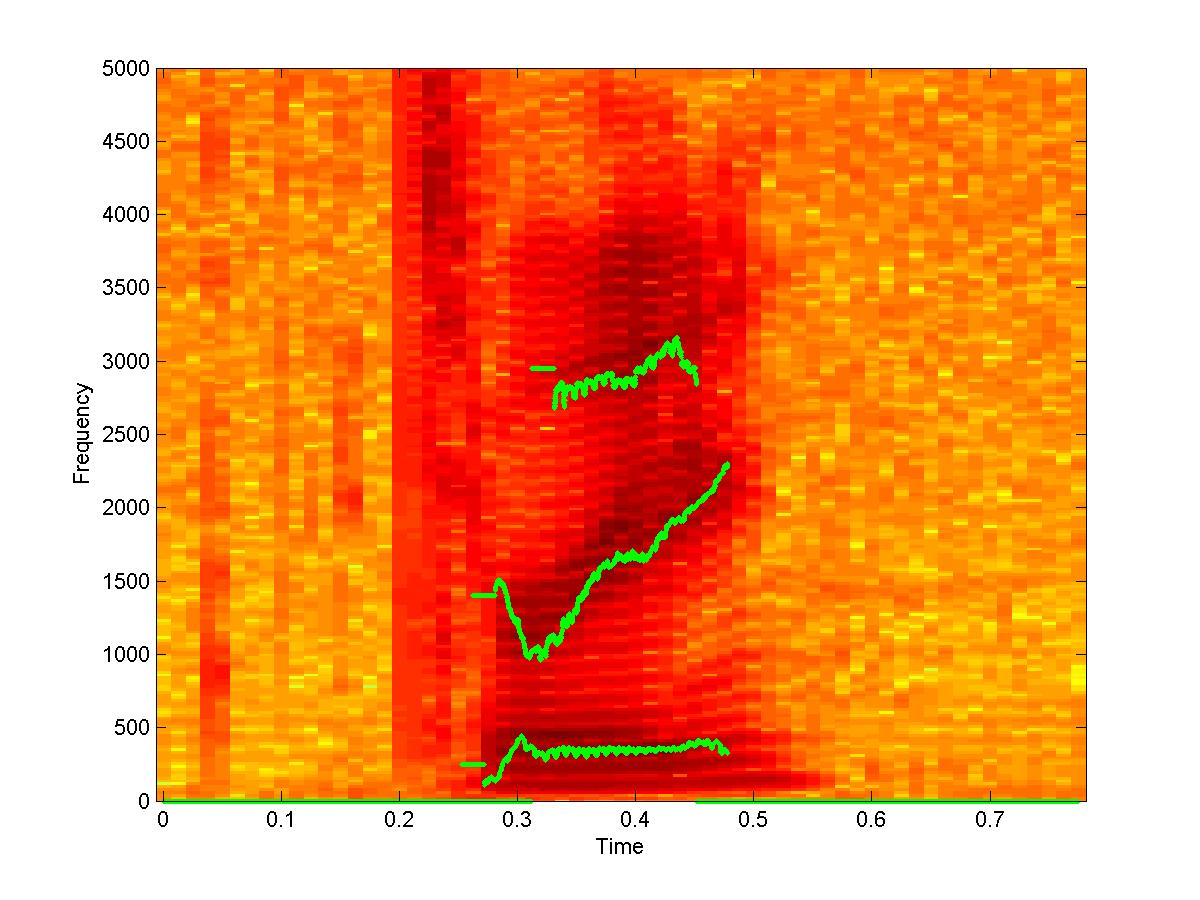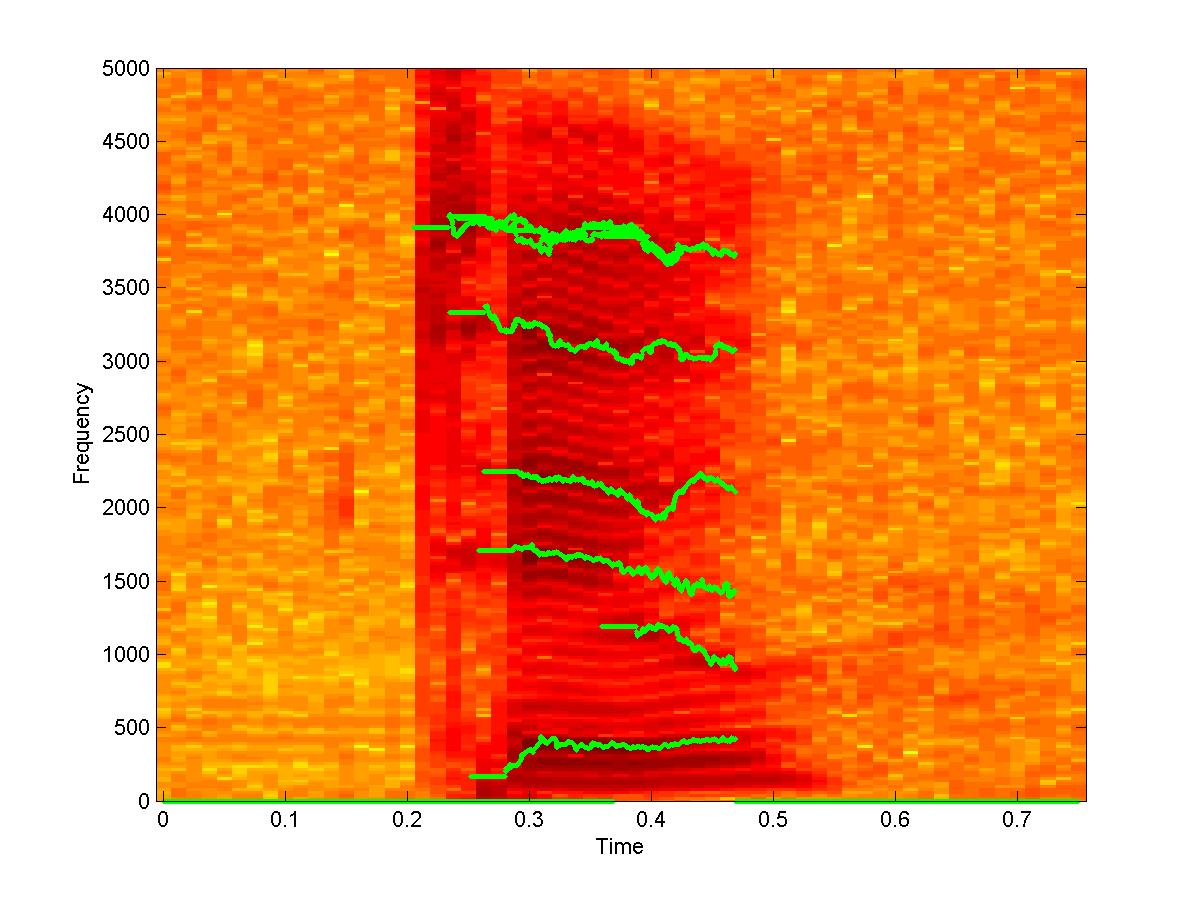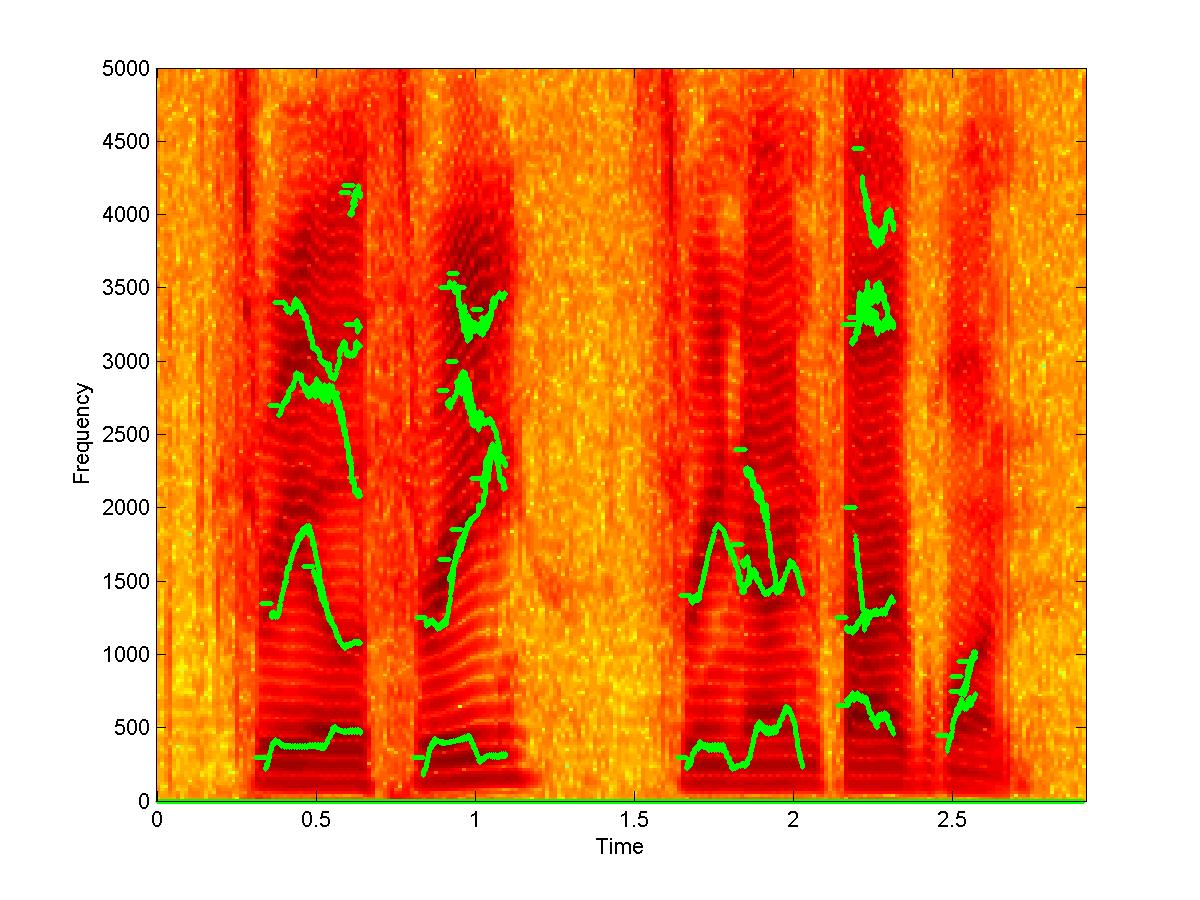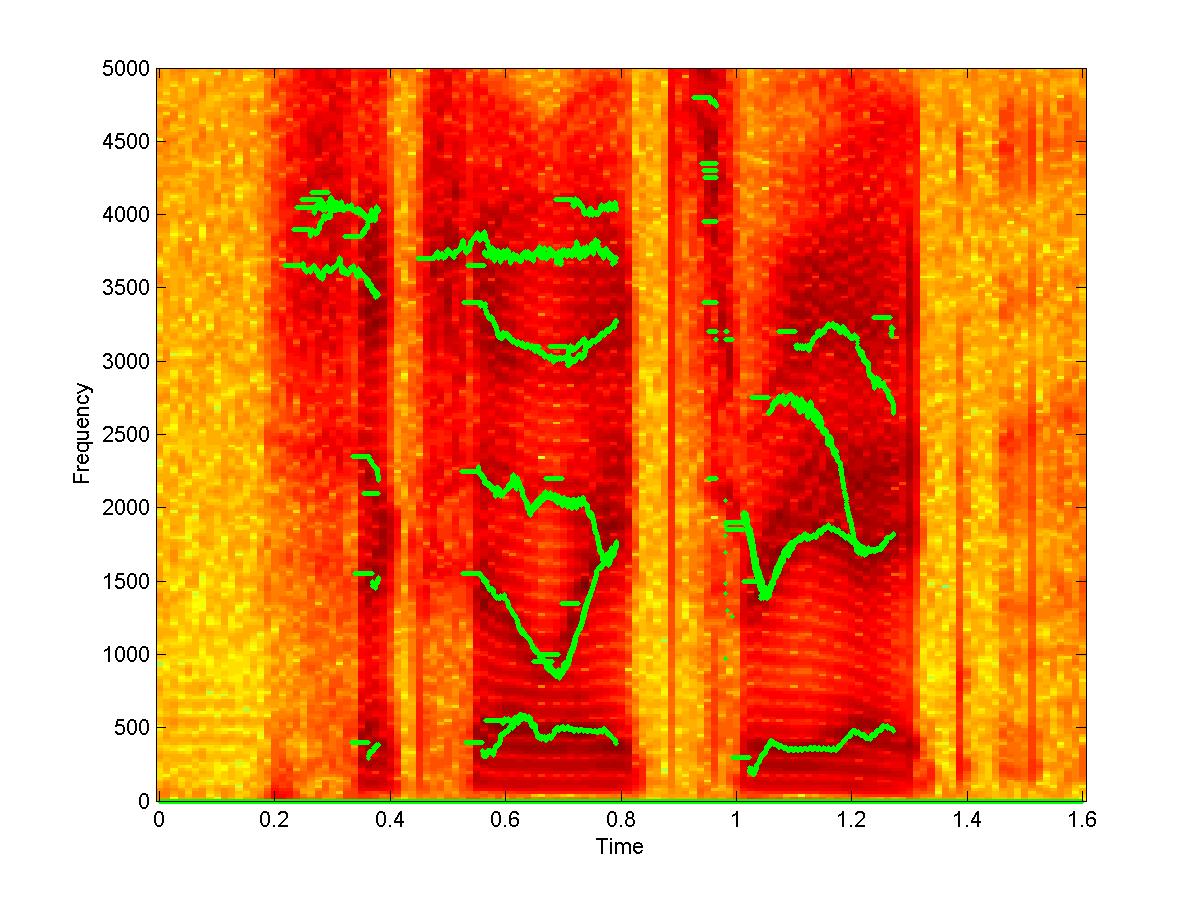Minimum Variance Filterbank algorithm for Spectrally-compact components (MVFB)
Fig 2: MVFB algorithm for spectrally-compact signals
| AIF tracks and Null tracks of speech utterance “Three” | |
 Fig 3(a) |
 Fig 3(b) |
The spectrogram of the speech utterance ``Three'' and the formant tracks (AIFs) for three groups of filters obtained by the above procedure are shown in Fig (3a). Particularly noteworthy is the Fig (3b) which shows the tracks of the nulls of the time-varying resultant filter whose passband stays centered on the third formant (located around 3 kHz). Note that the nulls of this filter are always centered over the first and the second formants, even though these formants themselves are slowly drifting.
Given below are the few examples which shows the formant tracks
obtained by the above described algorithm. Clear spectrograms and
spectrograms with formant tracks are shown for each example.
| 1. Spectrogram and AIF tracks for speech utterance “Two” | |
 |
 |
| 2. Spectrogram and AIF tracks for speech utterance “Two Zero Eight Eight” | |
 |
 |
| 3. Spectrogram and AIF tracks for speech utterance “Nine” | |
 |
 |
| 4. Spectrogram and AIF tracks for speech utterance “Two Oh Five” | |
 |
 |
| 5. Spectrogram and AIF tracks for speech utterance “Three Two Zero Zero Zero” | |
 |
 |
| 6. Spectrogram and AIF tracks for speech utterance “Three Oh Three Three Nini Five One” | |
 |
 |
| 7. Spectrogram and AIF tracks for speech utterance “Six Oh Eight Three Eight” | |
 |
 |
Minimum Variance Filterbank
algorithm for
Spectrally-diffuse components
Fig 4: MVFB algorithm for spectrally-diffuse signals
Minimum Variance Filterbank algorithm (Fig 4)
for spectrally-diffuse signals is designed to characterize any sudden
changes/onsets in the signal. It consists of a bank of narrowband
filters which are "Delta w" apart in their center frequencies. The outputs of
the filter are compressed by the nonlinearity. More details on
this particular part of work will be provided later.